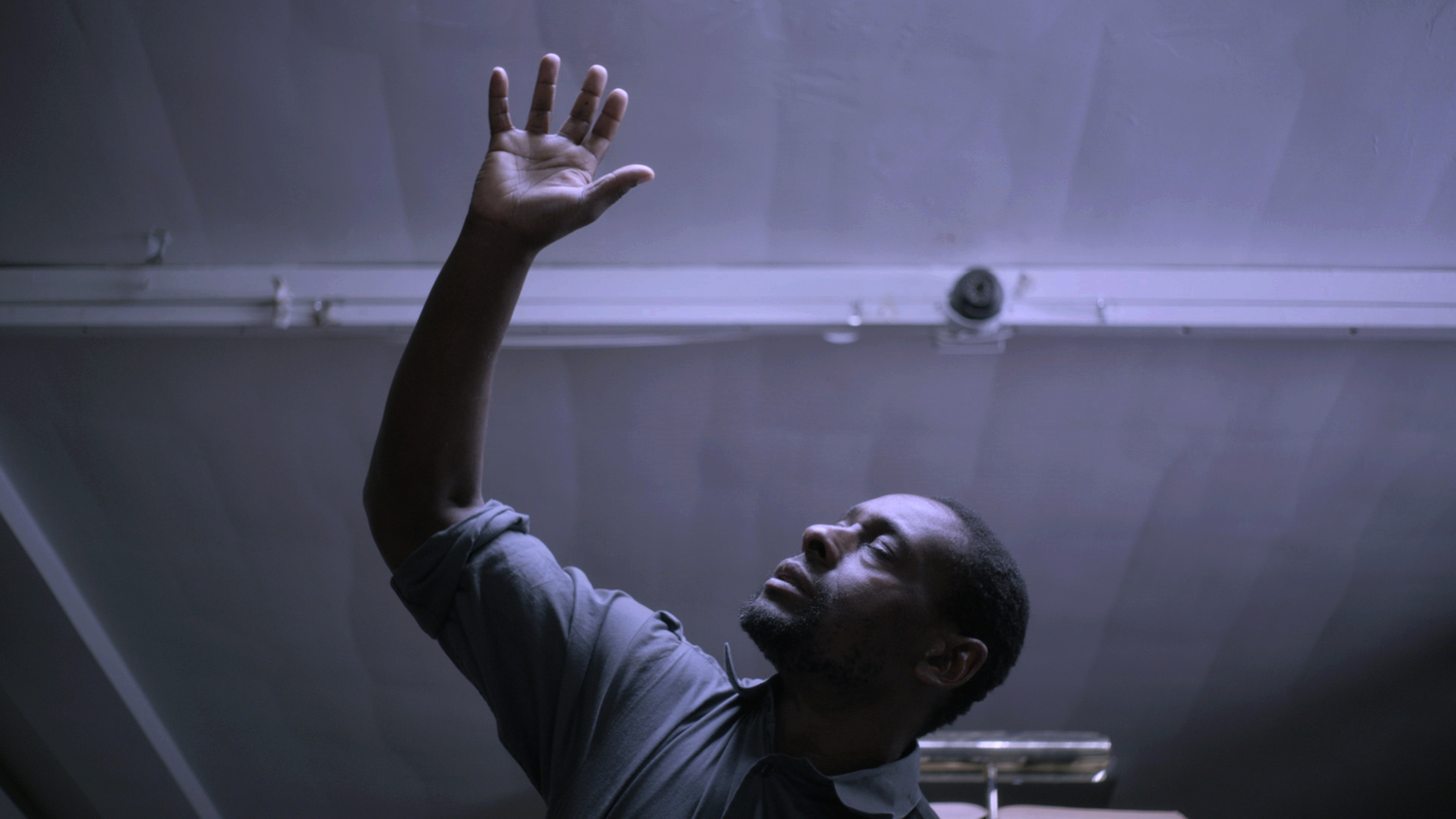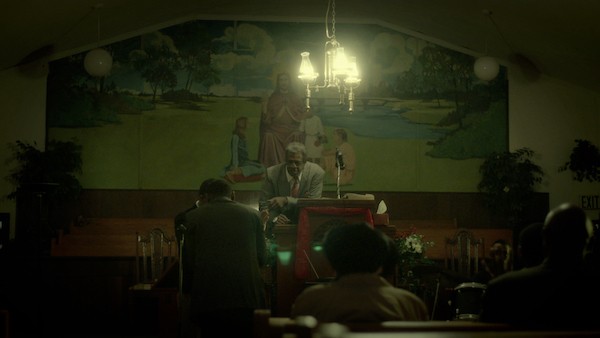Indie Memphis Thursday commences with a premiere from one of Memphis’ favorite sons, Ira Sachs. You can read an interview I did with the Love Is Strange filmmaker about his new work Little Men in the October issue of Memphis magazine.
Then, at 8:30 PM, the Memphis premiere of Free In Deed by Jake Mahaffy. The director, a native of Ohio who is currently an Associate Professor of Film, TV, and Media at the University of Auckland in New Zealand, chose to shoot his film in Memphis in 2014 at the urging of producer Mike Ryan, who has been involved in several film projects in the Bluff City. The beautifully shot, subtly intense film follows the fateful meeting of Melva (Edwina Findley), the single mother of an autistic child, and Abe (David Harewood), a school janitor turned faith healer in a tiny, storefront church. Melva is losing control of her son’s increasingly violent outbursts, and the medical community (represented by Memphis actor Jon Sparks) is only interested in throwing sedatives at the problem. So she turns to the church, where Abe and the ministers try to drive the evil spirits out of the boy with prayer and exorcism.

David Harewood casting out evil spirits in Free In Deed
The film won the Orrizonti Award for Best Film when it premiered at the prestigious 2015 Venice Film Festival, and it’s easy to see why. I interviewed Mahaffy via email from his home in New Zealand about the making of Free In Deed in Memphis.
FLYER: Your story is “based on true events.” What was it that attracted you to this story? How did you balance the adaptation of the real life story with the needs of telling a film story?
MAHAFFY: A man was accused of crushing a child to death while trying to heal him during a religious prayer service in a small storefront church. The man had the best intentions but the dramatic irony of someone who set out to help and ends up accused of causing harm was something that interested me. I had been raised religious and then deconverted, so I felt I have both the familiarity and objectivity to represent this situation. The point is not to make a reenactment or docudrama but to take the emotional truth of the circumstance and recreate that for audiences. People who have never been to church or never been poor or never been to America should feel what it would be like rather than only know the facts and details of the news story.
FLYER: Did making this film change the way you view religion?
MAHAFFY: As a child, I was raised in a similar way with similar beliefs but my personal experiences have changed me significantly since then. Making this film didn’t affect my own understanding of religio,n but like any difficult experience, it did deepen my empathy and appreciation of other people.
FLYER: How did filming in Memphis come about? How was the experience of making a movie here? You had some of the best crew and actors in the city on this shoot. How did they compare with other crews you’ve worked with?
MAHAFFY: Producer Mike Ryan brought the film to Memphis. Early on, we were discussing possible locations for the project depending on weather and community connections. Once I understood more of the history and culture of Memphis. I agreed it should be the location for production. Mike and the Memphis Film Commission took it from there. Memphis is a unique city in the world—a source of profound soul and talent—and this film could not have been made anywhere else. I am so grateful to the people that agreed to participate. Because of them we were able to capture some of the spirit and intensity of the churches and characters. It is like a documentary in some cases; an archival recording of that unique world. There aren’t any other films like it.

Free In Deed is set in the world of tiny, storefront churches. It was shot in Memphis in 2014.
FLYER: You had some excellent actors, both from Memphis and elsewhere. David Harewood was amazing in what must have been a very difficult part. Where did you find him?
MAHAFFY: Mike first introduced David to me. We talked over Skype and hit it off. He was both daring and naïve enough to take on the project. This film was full of career-destroying risks, not least of which was a white guy trying to make a complex and authentic film about a real-life tragedy in a religious African-American community. I think being a Brit and never have been to a church before allowed David to remain oblivious to just how risky the film would be. David was totally committed and most importantly, he is humble in his work. After three days of shooting we had to recreate his character and change his backstory, mannerisms, accent, hairstyle, etc. But he did it with trust and a good nature. Edwina Findley also did truly great work in her role. I have the highest respect for people who take creative and professional risk on material like this.
FLYER: RayJay Chandler, who plays the young autistic boy, was also very impressive. How did you work with him to get the details of autistic behavior right?
MAHAFFY: RaJay is brilliant. What a talent. I gave a set of principles for RaJay to follow regarding certain stimuli that would affect him. Wherever the scene went, if someone slammed a door accidentally or tried to touch him, he would know the proper reaction so he wouldn’t be an automaton or a prop but a real person with authentic reactions. This was critical. And I would demonstrate certain behaviours and ask RaJay to mimic them. He was observant and technically perfect and completely committed. It was always a concern that this character be believable and the child actor be fully immersed in the part, not embarrassed or holding back. You would see the fakery in the child’s eyes if it wasn’t real. RaJay would switch on and off for the filmed takes. Scream and fight and then start laughing after ‘cut!’.

Edwina Findley as Melva in Free In Deed
FLYER: I’m so glad you gave Helen Bowman such a great part. She’s an absolute gem, beloved by the Memphis film community. How was working with her?
MAHAFFY: She is a sweetheart and the material we were able to use in the edit is priceless. She gave everything she could for the film.
FLYER: Are there any other Memphis actors you would like to single out for praise?
Preston Shannon and Prophetess Libra brought so much energy and power to the film. It would not exist without them. Kathy Smith was praying for real throughout the movie. Willie Tate is an amazing preacher. I feel like shooting his sermon was a document for the historical record. Nikki Newburger and Adam Hohenberg were the local fixers and doers. Look, there are so many people who worked on and appeared in the film, some of them absolutely invaluable to the project individually. I think it would be really great if you published the film credits in your paper as a ‘thank you’ and also because it demonstrates the community involvement in this film. That is the only way for films like this to get made. You never know if it’s going to work out but everybody took a risk.
FLYER: How has the movie been received since winning big at Venice? Does it play outside the United States differently than it plays here?
MAHAFFY: Wherever it plays, audiences are immersed in the story. People laugh and cry and are stunned and anxious or ecstatic or upset. People from all over the world, from different cultures and histories can still relate emotionally to the experiences depicted in the film. They experience genuine empathy for characters very much unlike themselves. It makes them curious and expands their understanding of a part of America they have never seen or even heard of.
Indie Memphis Thursday: Free In Deed

